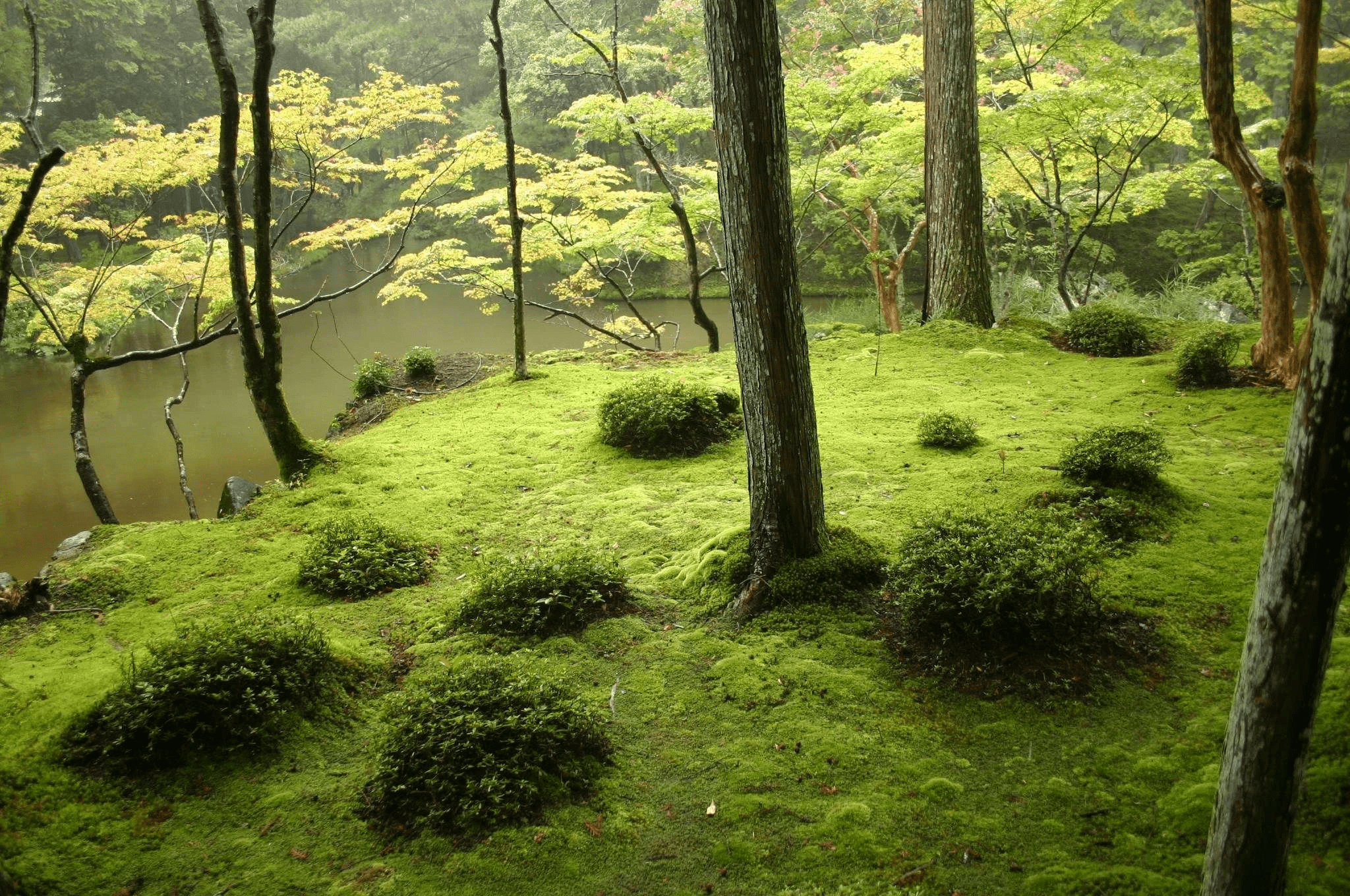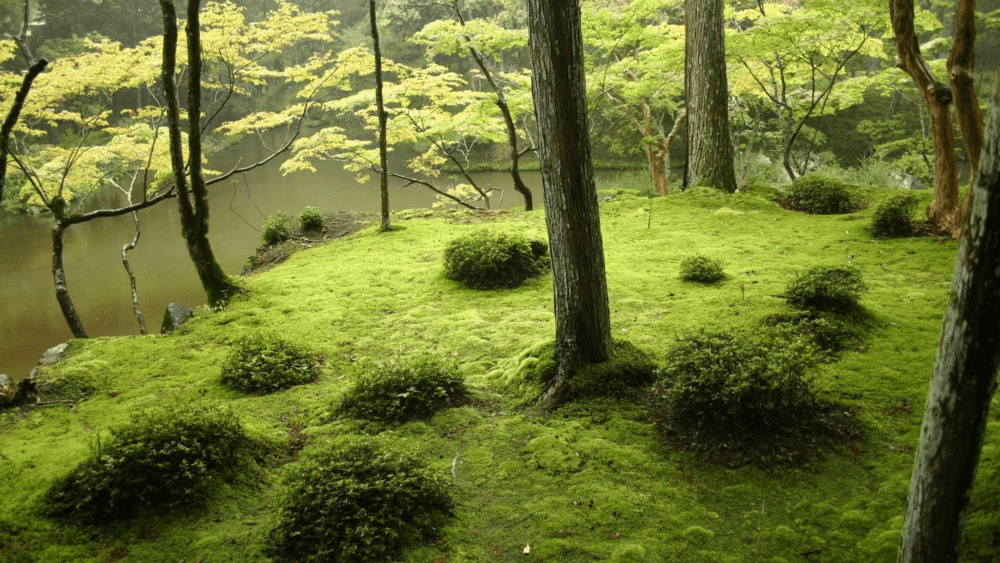On occasion I receive calls from frustrated homeowners wanting to know how to get moss out of their lawn. This week I would like to flip the tables and ask you to consider what it might take to establish moss in the lawn. If you think about why we grow lush grassy lawns most would say they want that green color in the landscape. What could be greener than a carpet of emerald green Fern Moss (Thuidium spp.) during a dreary winter. Looking for low maintenance landscapes? Mosses are able to colonize and persist in some of the most inhospitable growing conditions around your property like compacted soils, dense shade, sidewalk and driveway edges, and even the lawn. Chances are if you have moss in your lawn now you can easily make the switch to moss. If not, it still may be possible to establish moss in the landscape so long as you meet its basic needs for growth.
So what are the basic needs of moss? First and foremost is shade. All species of moss require shade although different varieties survive in varying degrees of shade. Unless you live on a wooded lot, you may not have enough shade to replace your whole lawn; however a stone or brick pathway through the woods or along the north side of the home could be a great location. Also replacing grass with moss around the base of large shade trees like maple, oak, or tulip poplar is very attractive and helps protect the tree’s trunk from string trimmers and mowers. A second and equally important need is an acidic soil. A soil pH between 5.0 and 6.0 is ideal. A soil test is the only accurate way of determining soil pH and the product and rate needed to lower the pH if necessary. Finally, mosses need adequate moisture to flourish although they will survive in drier locations or drier times of the year.
If you already have moss in the landscape, then the site is suitable and little or no preparation is necessary. Where grass is still present in the moss, treat it with glyphosate herbicide (such as Roundup) to kill grass without damaging the moss. Keep the area free from leaves, twigs, etc and be patient as the moss does the rest. You can speed up the process by transplanting additional mosses to the site.

To establish moss in a currently moss-free location, first verify the site has sufficient shade, an acidic pH, and adequate moisture. Prepare the site by raking out leaves and other debri and firm up the soil by tamping. Again, you can wait for the moss to naturally colonize the area or transplant appropriate species to the site. The differences are simple – allowing it to colonize naturally will give you a more hardy moss best suited for your landscape but it may take years for a solid mass; transplanting moss gives you an immediate green carpet but it will require more attention to watering during the season.
Moss to transplant is sold commercially. Many varieties can be found online such as Fern Moss, Cushion Moss, Haircap Moss, and Rock Cap Moss. Each has niches where they prefer to grow and you should try to match your site to the appropriate variety. You can also find naturally occurring moss to dig and move to your landscape but make sure you are not trespassing on private property or public lands when digging moss. It is very important to choose sites that are similar to your landscape. For example, those mosses harvested from rocks or logs grow best on rocks or logs, not soil and vice versa.
To harvest moss, use a spade or knife to dig sods of moss at least the size of an outstretched hand, taking plenty of soil to keep rhizoids intact. Protect the site where you dug the moss from erosion, by covering the area with leaf debri until new moss re-colonizes the site. Back at your planting site, press pieces of sod in place to make good contact with the soil. To make the moss go a bit further, consider spacing the moss sods at spaced intervals and in time they will grow together. Water thoroughly and continue watering regularly during the first year, even into the winter months, and especially any time that the surface soil dries out. After the moss has established, avoid regular traffic for the first year to allow it to really take hold.
A transplant slurry is an alternative to sodding moss. To make a slurry, mix 2 parts moss, 2 parts water, and one part buttermilk in a blender (not your kitchen one). Blend thoroughly and then spread the mixture over the area where you would like the moss to grow. Keep misted with water (never let it dry out completely) until the moss has established itself. With a moss slurry you can cover a large area faster, but it will take several months to really become established.
Moss adds natural beauty to the landscape, helps retain moisture and soil nutrients, reduces erosion and provides year-round low-maintenance greenery. But if you are still not convinced remember that if the conditions are right for moss to be growing in your lawn right now (i.e., shade, acidic pH, moist soils, compaction) it may be a costly project to renovate the site to get grass to grow, with no guarantees of success. Why fight it?
— Kelly Jackson, Christian County Extension Agent





